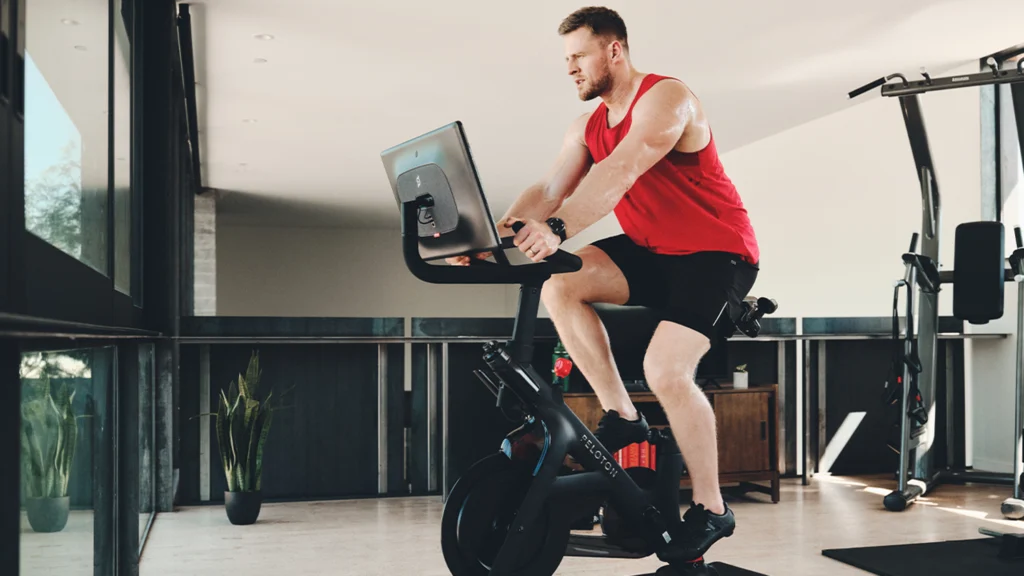Smart Home Gym Equipment Market To Hit $4 Billion By 2030

Smart home gym equipment is no longer just about reps and sets — it’s about data, personalization and connected ecosystems
The global smart home gym equipment market is expected to grow from $3.2 billion in 2024 to $4.0 billion by 2030, according to a new report from ResearchAndMarkets.com. While the projected growth rate may seem modest, the transformation of home fitness has been anything but.
Rapid technological advances (particularly AI) and shifting consumer preferences have redefined what home workouts look and feel like, and the momentum isn’t slowing down. What began as a pandemic-driven pivot to at-home workouts has since become the norm. Today’s consumers aren’t just chasing convenience – they want personalization, connectivity and a sense of control over their fitness journeys, all from the comfort of their homes.
Here’s a breakdown of what’s fueling growth in the smart home gym equipment market, how technology is reshaping the category and the key trends to watch.
The New Workout Reality
Although several factors are fueling the market’s growth, one of the biggest drivers is a broader shift toward health, wellness and prevention — a change sparked by the pandemic era, when gym closures led many to embrace home fitness and invest in equipment from leaders like Peloton and Tonal. A turbulent time, for sure – but it also brought a new sense of flexibility, as consumers no longer had to commute to the gym or work around limited health club hours. As the market research report notes, that flexibility has proven to be more than a temporary convenience; it’s become a lasting preference.
credit: PelotonMeanwhile, the widespread adoption of wearable fitness tech is also driving consumer interest in smart home gym equipment, especially systems that integrate their favorite wearables and offer instant performance feedback. Additionally, the growing number of subscription-based fitness services and virtual fitness classes has opened new doors for consumers to access a diverse range of workout content.
Not to be overlooked: the growing awareness of mental health and its role in overall well-being. To that point, many smart home gyms are now incorporating holistic elements that promote mindfulness and stress reduction, such as guided meditation and yoga sessions.
Altogether, the combination of convenience, customization and connectivity, paired with the integration of mental health–supporting features, is projected to continue resonating with a broad range of consumers.
Tech Gets a Workout
Artificial intelligence, virtual reality and the Internet of Things are redefining how home workouts look and feel, giving at-home fitness enthusiasts access to advanced metrics, real-time form analysis and personalized workout adjustments that help them train smarter and reach goals more efficiently.
Immersive tech is also pushing home fitness into new territory, particularly virtual reality, which allows users to join group classes in simulated environments or take on gamified workouts that mimic outdoor runs, boutique studio sessions or even meditative escapes. The result, according to the report, is a more engaging experience that blends fitness with entertainment and boosts motivation (and retention) in the process.
credit: VirtuixIn this still up-and-coming space, Virtuix Studios, which raised more than $5 million in 2023 for its gamified platform, recently launched Treks – a new gamified fitness offering provides users with an immersive fitness tourism experience. Players embark on virtual adventures using the company’s Omni One full-body VR system, which allows them to freely walk and run, crouch, kneel, jump, strafe and even backpedal within virtual worlds.
credit: Reform RXNotably, the Pilates boom that has led to rapid growth in the boutique fitness franchise space is quickly spilling over into home fitness equipment. Just this week, iFIT has acquired Reform RX, a high-end brand known for its commercial and at-home Pilates reformer modeled after a Formula 1 race car. With the addition of Reform RX, iFIT plans to expand its interactive fitness platform with Pilates-based programming led by certified instructors. Technogym is also getting into the action with its own modern reformer.
Personalization Becomes the Competitive Edge
Across the fitness, wellness and health sectors, one theme is dominating: personalization. The smart home gym market is no exception.
According to the report, rising demand for individualized workouts has driven the adoption of AI-enabled equipment that adapts in real-time to user performance, shifting home fitness from static routines to dynamic, data-informed training. In parallel, consumers are increasingly gravitating toward subscription-based platforms that offer access to live and on-demand classes across formats like yoga, pilates, strength training and cycling – turning fitness hardware into gateways for broader digital fitness ecosystems.
credit: EchelonIt’s an area that Echelon is cornering following two recent plays: its recent acquisition of FlexIt, a digital wellness platform offering one-on-one personal fitness and health training across nutrition, coaching, strength, conditioning and physical therapy and its new partnership with Amazon Web Services which will create hyper-personalized fitness journeys for members.
Connected rowing company Hydrow is also leaning into the high-tech strength training equipment and analytics space. The Boston-based connected rowing company acquired a majority stake in Speede Fitness last year, with plans to lay the groundwork for the future of strength and cardio training.
Social integration is also playing a growing role. Features that allow users to compare performance stats or join virtual fitness communities are adding a sense of connection often found in traditional gyms, which is a key factor in engagement and retention within the digital fitness space.
The post Smart Home Gym Equipment Market To Hit $4 Billion by 2030 appeared first on Athletech News.


